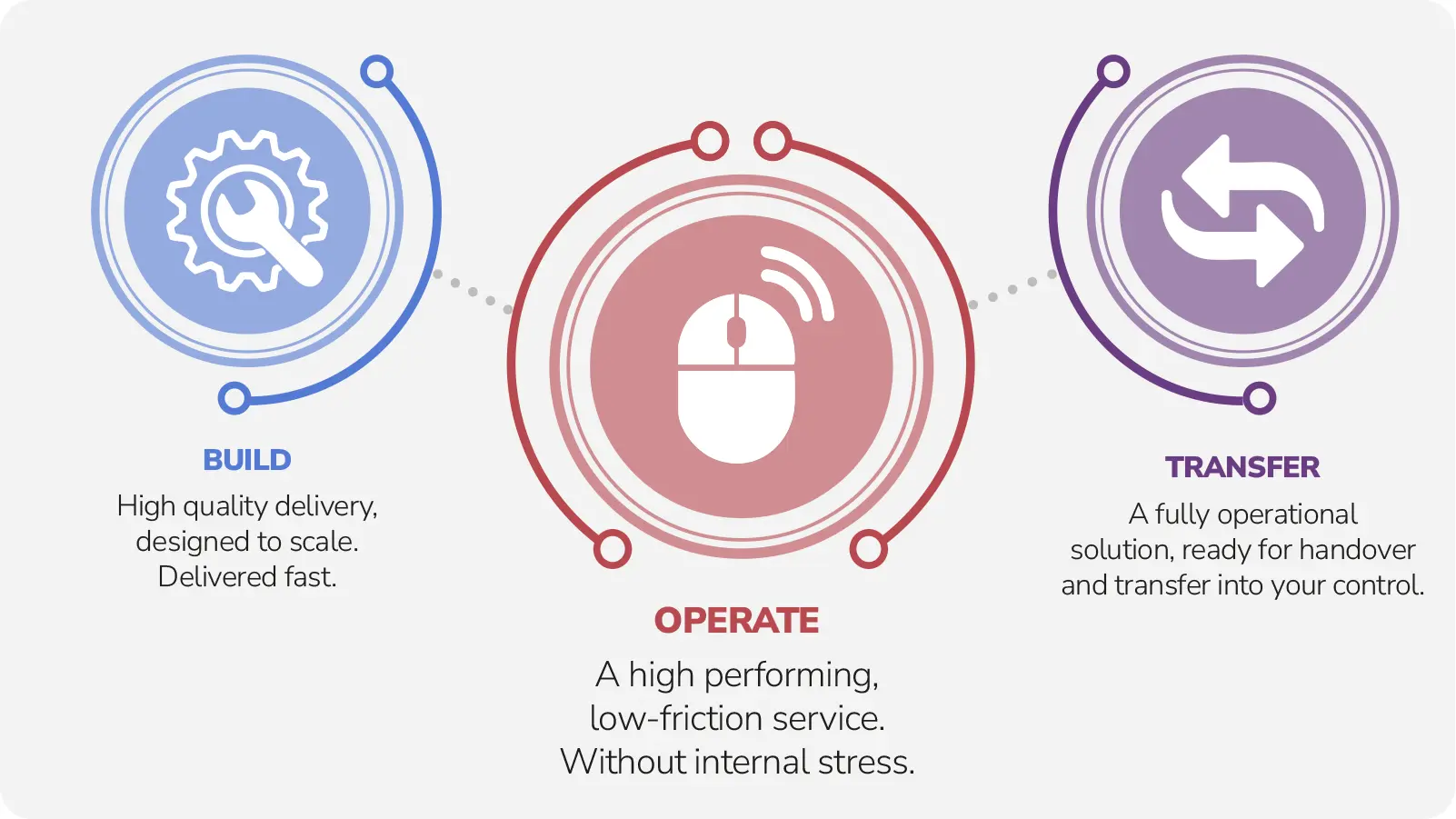Operational Digitalisation.
Automate the Gaps.
Scale What Works.
Services
We help public and private sector teams replace inefficient manual work with smart, digital solutions, reducing costs and improving the customer experience to unlock real operational efficiencies.
TRUSTED BY GOVERNMENT DEPARTMENTS, FINANCIAL SERVICES AND FAST-MOVING ORGANISATIONS
What if your processes didn’t rely on people plugging the gaps?
When processes depend on staff manually bridging systems, customer experience and efficiency suffer. We observe how work really gets done, identify waste and deliver simple, targeted software solutions that reduce reliance on people and improve service at every step.

We work with
Government teams following GDS and looking to reduce cost-to-serve
Private sector organisations under pressure to improve NPS
Operational teams stuck in manual handoffs, workarounds and swivel-chair tasks
Leaders aiming to improve customer journeys and reduce inefficiencies
Product owners with fragmented back-office processes
Build. Operate. Transfer.
Our delivery model gives you a low-risk path to operational efficiency, enabling faster delivery, greater stability and long-term adaptability. We do it all without disrupting service or the need to overhaul your core systems.


“The solution that has been developed is elegant in its design, thorough in its understanding of the customer and simple in its execution leading users seamlessly through the process. Both the system and teams stood up to the scrutiny and have delivered an exemplary platform that will be built upon and used by the MCA for many years”
Dan Vivian
Commercial Director
Our approach. From waste to working smarter
Observe. Simplify. Automate.
1
Understand what’s really happening
We carry out frontline staff observation, process analysis and desk based review to identify friction, waste and costly workarounds.
2
Prioritise & design
We review work instructions, define improvement opportunities and build a prioritised backlog based on value and effort.
3
Deliver & iterate
Using agile delivery, we develop small-scale, high-impact apps and services that reduce cost-to-serve and improve user the experience.
Key technologies
The right tech stack isn’t just about tools, it’s about leverage. From core platforms to emerging innovations, we focus on solutions that integrate seamlessly, scale effortlessly and deliver measurable impact. No bloated systems. No wasted spend. Just the right technology, working hard for you.
Angular
React
Nest JS

SQL

No SQL
Node JS
Rabbit MQ
Java
Google Cloud

AWS
Microsoft Azure
Jenkins
GitHub Actions
Azure DevOps
OKTA

Auth0

Entra ID
Jira

ELK
Prometheus
Cloud Watch

Modular Monolith

DDD

Claude
Cursor AI
Open AI
.Net
The projects we’ve brought to life
Why clients choose Catapult
20+
Years of software development excellence
400+
Satisfied clients and thousands of successful projects
$
On time, on-budget and on-scope delivery
An ISO 27001 certified company
Fixed price guarantee. We guarantee to deliver the outcome we’ve agreed with you, at a fixed price.
Hothouse veterans. Rapid, iterative & hands-on. We’re pragmatic problem solvers who thrive on building things that work.
Prototypes with purpose. Our engineers write production-grade code from day one, not just glossy click-throughs.
Tech-agnostic, outcome-first. Guidance in selecting stacks that minimise costs & maximise ROI
Cross-sector expertise
With a specialism across government and financial services, we have experience in 20+ sectors. We implement solutions to co-ordinate multiple business operations specific to your domain
































